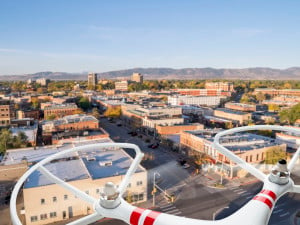By Drew M. Smith
 After months of planning and granting exemptions, the FAA finally announced a plan to handle the regulation of remote controlled drones. The list is to be expected by the end of November, in time for the holiday season. It is predicted that over 700,000 of these unmanned vehicles, including toy ones, will be sold for the holidays.1
After months of planning and granting exemptions, the FAA finally announced a plan to handle the regulation of remote controlled drones. The list is to be expected by the end of November, in time for the holiday season. It is predicted that over 700,000 of these unmanned vehicles, including toy ones, will be sold for the holidays.1
The reason they are taking action now is, in the minds of regulators, the alarming number of so-called ‘near misses.” These near misses are classified as when drones came within a certain distance of colliding with planes or flying near restricted airspace. Through August 9th there had been 650 of these so called near misses; triple the amount in the previous year. When the numbers are broken down however, only a few dozen of these were private use or hobbyists.2 The idea of a registry is to regulate them in case of a more serious issue.
The idea behind the list is simple. Like serial numbers on a gun, each of the manufactured drones would have a serial number. That serial number would be registered with a database and then the appropriate police can track down the offenders. As previously mentioned, the amount of drones that are anticipated to be used for commercial purposes are expected to exceed 700,000 this holiday.
This idea was hastened after several high-profile incidents that involved drones caused people’s safety to be compromised. At the U.S Open in Flushing, New York, a drone crashed into empty stands at a match. In Kentucky, a drone crashed into the stands at a Kentucky Wildcats game. And in California, delays in fighting one of the many wildfires in the state were caused by drones that had been flying in the smoke, causing the helicopters to be grounded and caused several cars in rush hour traffic to be burned.
Though a registration seems like a good idea, some critics say that the regulation is being too hasty to accurately make a proper regulation list. One of the glaring issues are those who build their own drones. Like other hobbies, there are clubs for those create and build their own drones or DIY, do-it-yourself. Some hobbyists can build their own drones with wooden planks and duct tape. In theory, this means they could potentially get around the list and having to register with the database. Before this list is published, there needs to be some thinking into these DIY.3
From an insurance perspective, this changes little in the way a policy works. You still need a separate Aviation coverage in your policy as most insurance carriers will not cover commercial drones under a general liability claim. AIG just recently established a specific policy just for drones and their operators in light of the recent announcement.4 However, most other carriers will need you to get an aviation policy.
1http://news.yahoo.com/faa-calls-drone-registry-big-problem-close-calls-211535468.html
2http://www.modelaircraft.org/gov/docs/AMAAnalysis-Closer-Look-at-FAA-Drone-Data_091415.pdf
3http://www.slate.com/articles/technology/future_tense/2015/10/one_major_problem_with_the_faa_drone_registry_diy_drones.html
4http://petapixel.com/2015/10/27/aig-has-an-insurance-policy-specifically-designed-for-camera-drones/

